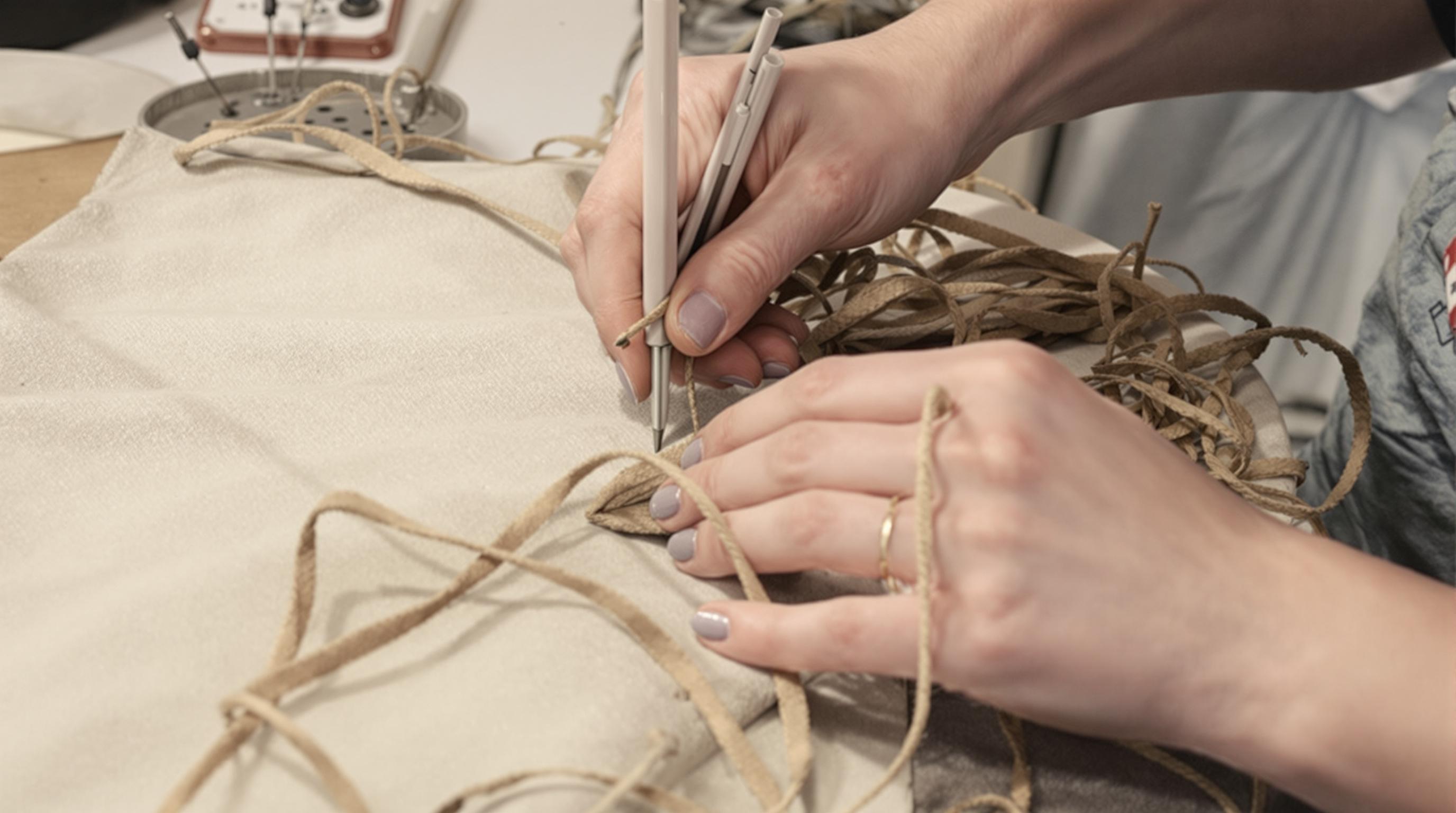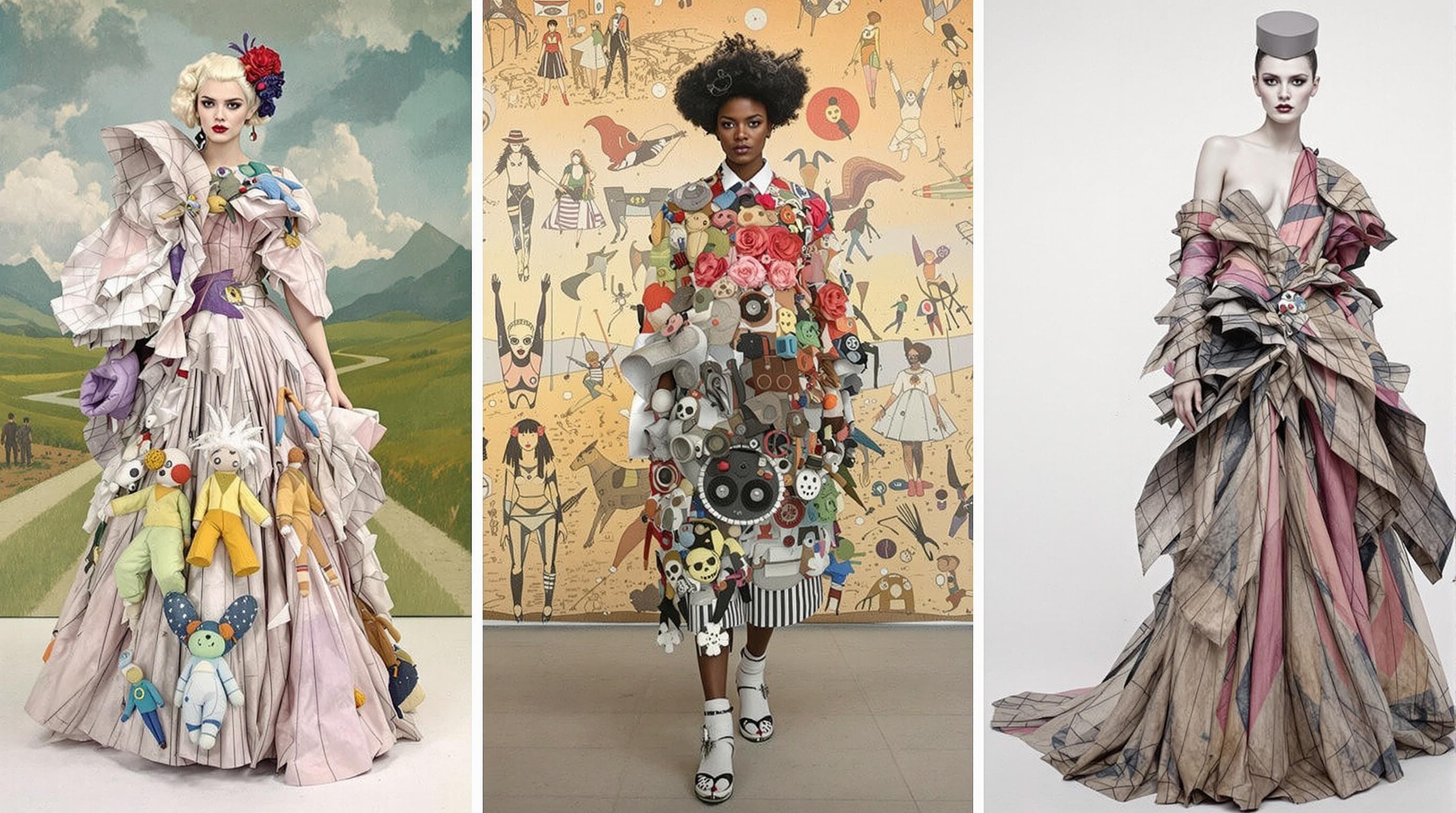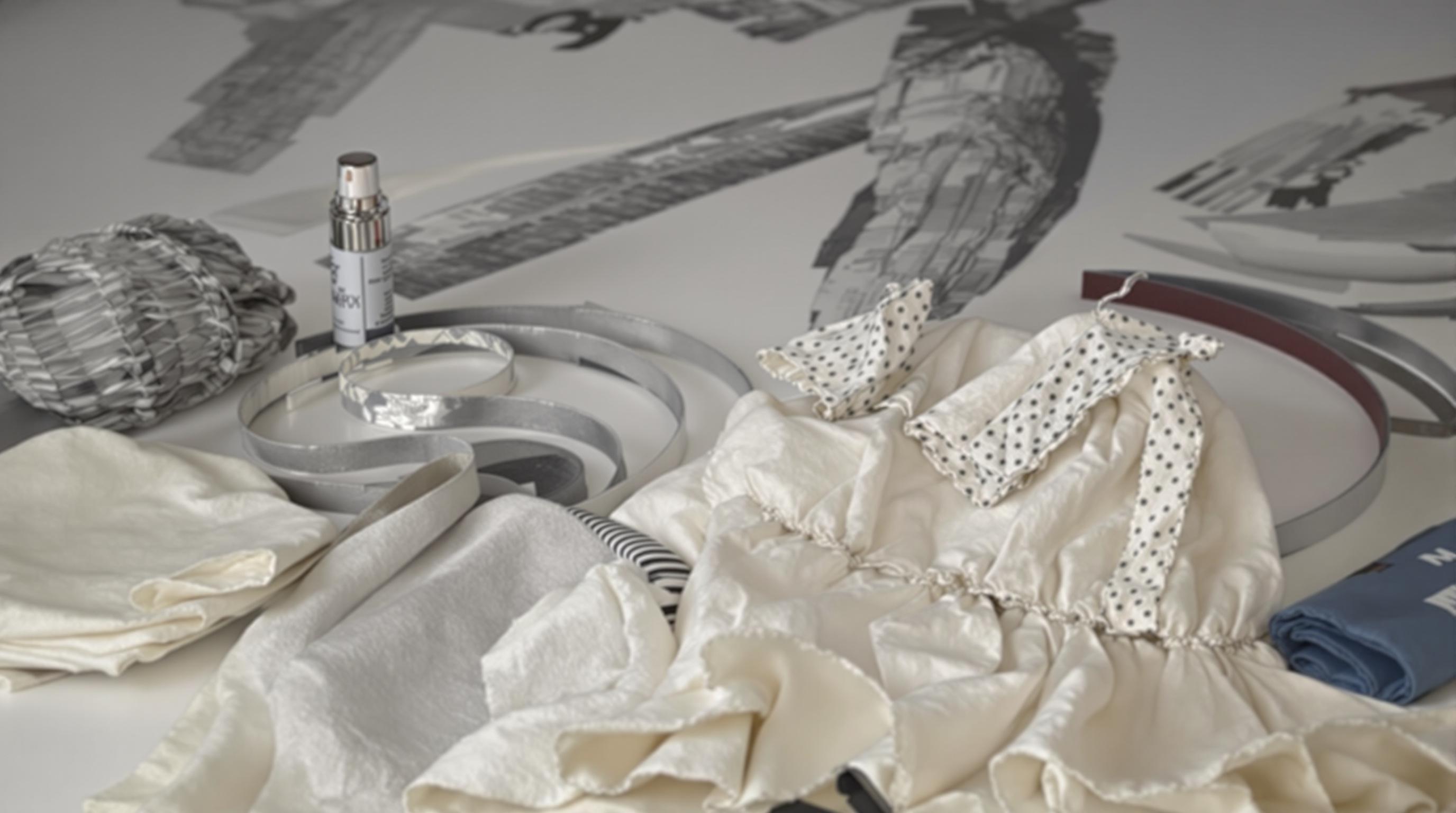Related Articles
- Fashion's Second Skin: The Underbelly of Wearable Tech and Its Surprising Roots in Previous Iconic Styles
- Shadows of Style: The Controversial Anti-Fashion Movements That Shook the Industry from Within
- Silent Statements: The Impact of Minimalism in Fashion's Most Overlooked Decades
- Distorted Reflections: The Role of AI in Shaping Fashion Perceptions and Consumer Trust in 2023
- Dressing the Future: How AI-Generated Designs Could Revolutionize Creativity and Profitability in Fashion
- The Art of Unfashion: How Anti-Fashion Movements are Reshaping Consumer Expectations and Market Strategies
Whispers of the Past: Unearthing Lost Techniques That Could Rewrite Fashion's Craftsmanship Narrative
Whispers of the Past: Unearthing Lost Techniques That Could Rewrite Fashion's Craftsmanship Narrative
Fashion is on the brink of a renaissance, as forgotten craftsmanship techniques are being rediscovered to challenge contemporary practices and inspire sustainable creativity. This exploration of bygone methods reveals how they could not only enrich the fashion narrative but also foster a deeper connection between consumers and the clothing they wear.
The Allure of the Past
Imagine walking into your favorite vintage shop, the smell of old fabric and earnest craftsmanship wafting through the air. You might find a coat that seems to whisper stories of its journey across time, crafted with techniques long since abandoned by mainstream fashion brands. The moment you slide it on, you feel something more than fabric; it is a connection to a history of skill and artistry that modern garments often lack.
A Historical Perspective on Craftsmanship
Historically, clothing was not just a necessity, but a form of identity, art, and craftsmanship. Before the Industrial Revolution, garments were often handmade, with techniques varying significantly across cultures. For instance, traditional Japanese Sashiko stitching not only reinforced fabric but also added a decorative element, embodying both function and beauty. Fast forward to today, many of these practices are fading into obscurity as mass-production techniques dominate the industry.
The Shift Towards Fast Fashion
The rise of fast fashion—an industry that churned out trendy, cheap garments at unprecedented rates—has dramatically shifted how consumers perceive clothing. According to the Environmental Protection Agency (EPA), the average American throws away around 81 pounds of clothing each year, leading to staggering waste in landfills. This reliance on disposable fashion has propelled a collective consciousness towards sustainable practices, urging designers to rethink their methods and embrace time-honored techniques.
Case Study: The Revival of Natural Dyeing
Take, for example, the revival of natural dyeing techniques. Brands like Plant Dyed are leading the charge, using plant-based materials to create vibrant colors and reducing harm to the environment. According to a study by the Textile Research Journal, natural dyes significantly lower toxicity levels compared to synthetic dyes, which are laden with harmful chemicals. In turn, this not only preserves the environment but also educates consumers about the lasting impact of their choices.
Telling Tales Through Textiles
A garment produced through ancient techniques carries with it stories of its origins, a narrative woven into every seam and stitch. It’s like having a piece of art that you can wear, an intimate bond between creator and consumer that goes far beyond mere fabric. The Mediterranean tradition of weaving, for example, results in intricate textiles that often carry local folklore, making each piece a storytelling medium.
From Monitor to Maneuver: The Digital Age's Role
In an era dominated by technology, traditional techniques might seem outdated. Yet, digital platforms are bringing these ancient practices back into the limelight. Social media has transformed the way we engage with art forms. A 2021 survey from Hootsuite indicated that 54% of social media users discover new brands and products through platforms like Instagram. This phenomenon allows artisans to showcase their skills and connect with conscious consumers eager for unique pieces that speak to their values.
Impacts on Modern Fashion
Imagine a future where fashion shows highlight collections made entirely from traditional techniques. Picture models strutting down runways in garments crafted from hand-loomed fabrics, adorned with intricate embroidery done by skilled artisans whose family legacies stretch back generations. The increasing demand for individuality and authenticity could spur a renaissance of artisanal craftsmanship, challenging the status quo of uniformity in fast fashion.
Statistics That Speak Volumes
Here’s a statistic that might surprise you: a report from the McKinsey Global Institute revealed that the fashion industry is responsible for more greenhouse gas emissions than the combined emissions of France, Germany, and the UK. This stark reality sets the stage for innovation alongside protection of traditional techniques. Embracing craftsmanship not only revives lost skills but also mitigates environmental impacts—after all, hand-made garments are often more durable and timeless than their mass-produced counterparts.
A Call to Action
As consumers, the power to effect change lies in our hands. By supporting brands that emphasize craftsmanship, we can drive demand for sustainable practices and ancient techniques. According to the Ellen MacArthur Foundation, shifting towards a circular fashion economy can reduce fashion’s environmental impact by 80% by 2030. So, the next time you consider a purchase, ask yourself: Does this garment have a story? Who made it? What techniques were used? Your answers can guide you in choosing garments that contribute to a sustainable future.
The Humorous Side of High Fashion
Interestingly, the fashion world can be quite humorous in its trends. Remember when high fashion turned patchwork into a runway statement? Patchwork isn't just a trendy design—it’s been around for centuries in various forms as a practical way to repurpose old materials. One has to wonder: did anyone just tell these elite designers that Grandma's quilts are now haute couture? Seems like we all have a little fashion wisdom hidden in our family attics!
Looking Ahead: The Future of Fashion
As we navigate through the complexities of modern consumerism, the essence of fashion craftsmanship stands poised to reclaim its place. Whether it’s slow fashion movements or the resurgence of handmade artistry, consumers and artisans alike are recognizing the value of preserving traditional techniques. As the saying goes, “What’s old is new again,” and never has it felt more applicable than now in fashion.
Embracing a Craftsmanship-Driven Future
Imagine walking into a future where every stitch, every thread tells a story—a time when the trend is no longer just what’s in season, but what’s meaningful. By embracing techniques that echo the past, fashion can take meaningful steps toward a sustainable, imaginative, and immersive future. The road might be long, but each interaction we have with the clothing we wear reinforces our connection to the art of craftsmanship, breathing new life into fashion’s narrative.
Conclusion
In a world increasingly disillusioned with fast fashion, whispers of the past beckon us to consider the stories woven into the fabrics we wear. As we unearth and celebrate lost techniques, we not only honor artisans who shaped our history but also pave the way for a future steeped in sustainability and individuality. So, the next time you’re slipping into your favorite garment, take a moment to remember the whispers, the craftsmanship, and the passion that brought it to life.




